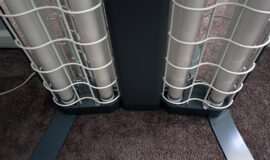The Mercedes Drive Pilot Is Begging To Be Unleashed
Mercedes has made it clear that it does not want to follow the trends when it comes to self-driving cars but to set them. It has been developing its Drive Pilot program aggressively and plans to include the functionality into more and more cars across its range.
The newest E-class sedan from Mercedes will be the first ‘real’ car to gain the autonomous driving license from Nevada. It is a huge achievement for a production car and it means that the Nevada licensing authorities deem the car safe and intelligent enough to be able to navigate the roads without any input from the drivers.
The Drive Pilot feature from Mercedes comprises of a number of components that are present in some of the other cars in its stable as well. The car is able to maintain a steady speed and distance from the car ahead (adaptive cruise control that Mercedes call Distance Pilot Distronic), it can steer on its own (Steering Pilot), can change lanes autonomously (Active Lane Change Assist, adjust the speed limit of the car by ‘reading’ the signs on the road or through information available on the GPS system (Speed Limit Pilot) and even bring the car to a halt completely on its own.
All of these systems are currently integrated in a manner that serves to enhance the comfort of the driver as well as increase the safety features of the road. Interestingly, the car is capable of recognizing pedestrians in the line of danger can even help steer the car away from them but leaves this decision to the driver currently.
Mercedes also requires the drivers to input some small sign like moving their fingers on the steering touchpads or move the steering wheel slightly every sixty seconds to ensure that the driver is paying attention.
The Drive Pilot system is superior to those offered by BMW and even Volvo since it can work even in the absence of clearly marked lanes or in areas where the lane markings are completely absent. The car is intelligent enough to apply implied speed limits on its own in certain situations. One such example would be slowing the car to 50 mph when entering city roads from a freeway.
The lead designer behind the Mercedes Drive Pilot system says that the company has deliberately opted not to unleash the entire self-driving capabilities of its program just yet. It believes that the inclusion and development of redundant safety systems are a necessity before such programs can be implemented completely.
As things stand currently, though, the Drive Pilot and Tesla’s Autopilot are the two most advanced driving assist software suites on the road. They are different in the manner in which they have approached the problem, particularly from a company like Google, but remarkably similar in a lot of the other ways.
Tesla seems to be the more adventurous among the two companies in the amount of leeway it lets drivers take with the driving assist software while Mercedes is taking a much more measured route. Until questions about regulations and responsibility in cases of accidents get answered, the lawyers at Mercedes may force the German car maker to keep potentially the most advanced self-driving software on a tight leash.





